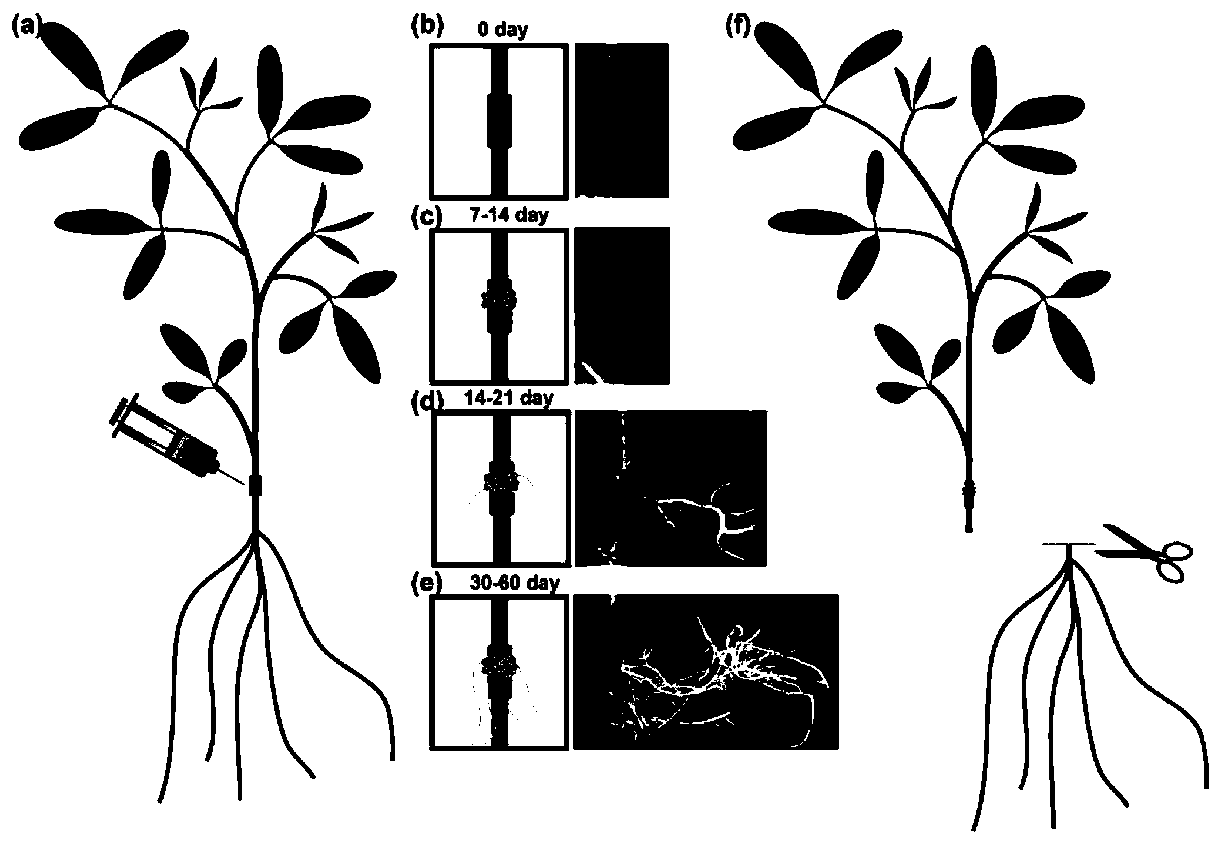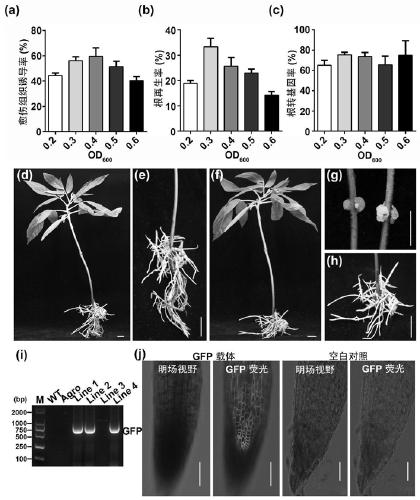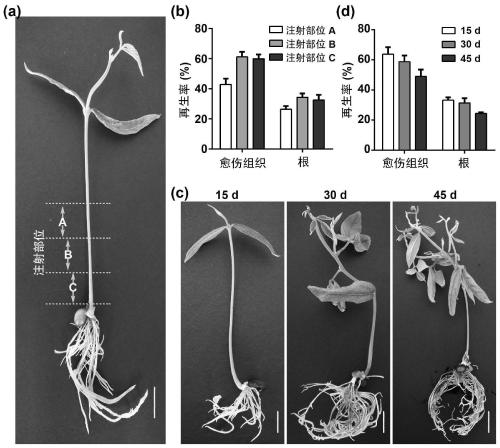Construction method for economic plant effective root transgene system
A construction method and plant technology, applied in botany equipment and methods, plant products, angiosperms/flowering plants, etc., can solve the problems of lack of rapid screening system for gene function analysis and limited development of research fields
- Summary
- Abstract
- Description
- Claims
- Application Information
AI Technical Summary
Problems solved by technology
Method used
Image
Examples
Embodiment 1
[0047] Taking the economic plant edamame as an example to illustrate the construction method of effective root transgenic system
[0048] Pigeon pea seeds came from the Key Laboratory of Forest Plant Ecology, Ministry of Education, Northeast Forestry University. The surface of pigeonpea seeds is sterilized with 0.1% mercuric chloride for 5-10 minutes, and then washed five times with sterile water. Inoculate the sterilized pigeonpea seeds in MS medium and cultivate them for about 1-2 months. For pigeonpea, the bacterial solution can be injected into the subcultured plants after about 30 days of growth. For other plants, they should be moved to soil (10 cm (diameter) × 9 cm (height) pots, soil and sand, the volume ratio is 3:1), and grown in a high-humidity environment at 25°C. At 50 μmol photon m in a 16 h photoperiod before performing the injection experiment -2 ·s -1 glow everywhere. In order to screen a strain of A. rhizogenes with higher transformation efficiency in pi...
Embodiment 2
[0066] The effects of injection concentration of Agrobacterium solution on callus induction rate, hairy root induction rate and transgenic rate were tested. Taking the K599 strain as the infecting strain, in order to select the optimal concentration of the K599 strain suspension, the concentrations were set to 0.2, 0.3, 0.4, 0.5 and 0.6OD 600 Value, take pigeonpea as object, implement and calculate hairy root regeneration rate according to the method of embodiment 1.
[0067] RT-PCR (operating method is the same as in Example 1) and GFP signal detection experiments were used to verify the transfer of the target gene. Described detection GFP signal experiment is specifically as follows: get pigeon pea regeneration hairy root protein, through the protein sample that PAGE (polyacrylamide gel electrophoresis) separates, transfer on the solid phase carrier (NC film), add rabbit anti-GFP serum to start Immunoreaction, then reacted with horseradish peroxidase, detected the expressio...
Embodiment 3
[0070] The best injection sites for pigeonpea seedling plants were tested separately.
[0071] First, the stem located 0.1–1.0 cm above the original hairy root of the seedling was divided into three parts with a height of 0.5 cm; they were named positions A, B and C ( image 3 (a)). With K599 strain as the infection strain, implement according to the method of Example 1.
[0072] The result shows: the callus of B and C position and the induction rate of hairy root are all about 60%, relatively A position has higher efficiency ( image 3 (b)).
PUM
 Login to View More
Login to View More Abstract
Description
Claims
Application Information
 Login to View More
Login to View More - R&D
- Intellectual Property
- Life Sciences
- Materials
- Tech Scout
- Unparalleled Data Quality
- Higher Quality Content
- 60% Fewer Hallucinations
Browse by: Latest US Patents, China's latest patents, Technical Efficacy Thesaurus, Application Domain, Technology Topic, Popular Technical Reports.
© 2025 PatSnap. All rights reserved.Legal|Privacy policy|Modern Slavery Act Transparency Statement|Sitemap|About US| Contact US: help@patsnap.com



